The catalytic converter is part of the exhaust system in GMC Sierra 2500 HD and its main purpose is to convert exhaust gases like carbon monoxide and hydrocarbons that are harmful to health and the environment into less harmful byproducts, like carbon dioxide and nitrogen gas. If the catalytic converter becomes clogged in your Sierra HD, it can affect the performance of your vehicle.
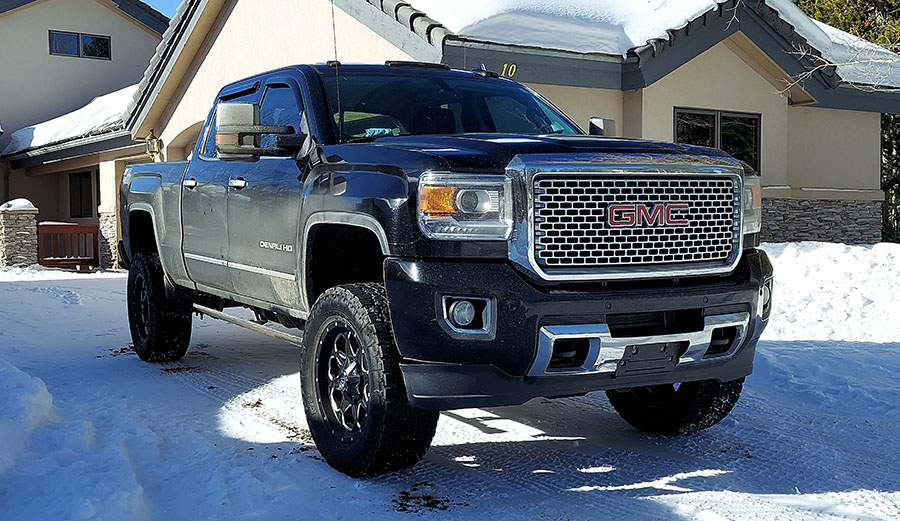
Symptoms
The most common signs of clogged catalytic converter in GMC Sierra 2500 HD are: limited performance above a certain speed or loss of performance, irregular running of the engine, unusual exhaust gas odor, poor fuel economy, engine check light illuminates, and sometimes rattling noises.
Poor acceleration
The most obvious sign of clogged catalytic converter in GMC Sierra 2500 HD is slow acceleration or degraded engine performance. When you press the gas pedal from a stopped position, the vehicle may accelerate normally initially. But after reaching a certain speed, the performance of the engine will drop due to blockage of increasing exhaust gases in the system. Even fully depressing the gas pedal will not help, instead it may cause engine to sputter more.
Poor fuel economy
When the engine cannot breathe properly due to clogged catalytic converter, it causes the engine to burn more fuel.
Failed emissions test
When the catalytic converter in Sierra HD is broken, it loses its ability to properly filter out toxic exhaust gases coming from the engine. This causes the vehicle to fail an emissions test. With a noticeable loss of performance, high fuel consumption and more harmful emissions at the tailpipe, a defective catalytic converter should definitely be considered.
Causes for catalytic converter failure in GMC Sierra 2500 HD
All catalytic converters fail eventually since its a wearing part. Over time, carbon deposits accumulate and clog up the catalytic converter, especially if the vehicle has racked up a lot of miles.
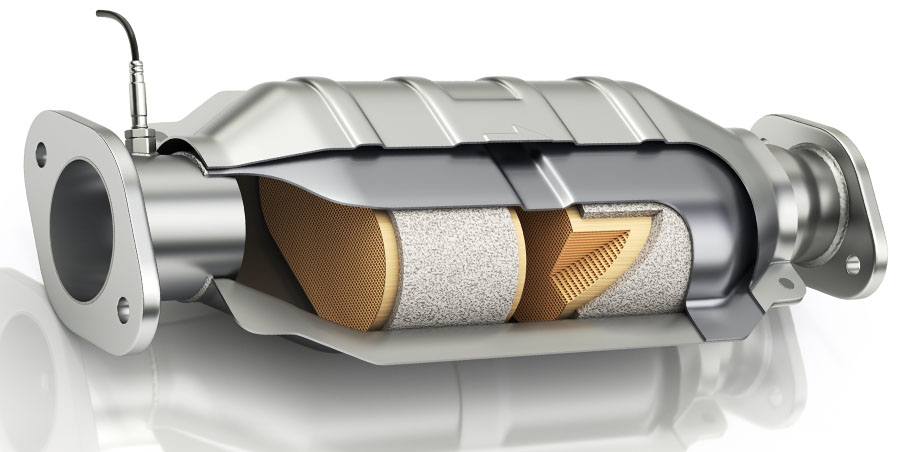
How long do catalytic converters last?
There are many factors that affect its service life, but typically catalytic converters last for around 100,000 miles or 10 years in Sierra HD. However, it can fail much earlier due to contamination, overheating or physical damage. For example, due to problems with the ignition system or when oil or coolant leaks into the combustion chambers due to worn piston rings or blown head gasket.
Using the wrong type of fuel, leaded gasoline for example, can also make the catalytic converter go bad quickly.
Bad O2 sensors a leading cause of premature catalytic converter failures
The O2 sensor in Sierra HD monitors the level of oxygen in the exhaust gasses that exit the engine and reports the data to the control unit which continuously adjusts the air-to-fuel ratio in the engine. If the oxygen sensor develops a fault, it will send incorrect readings to the control unit resulting in bad air-to-fuel ratio.
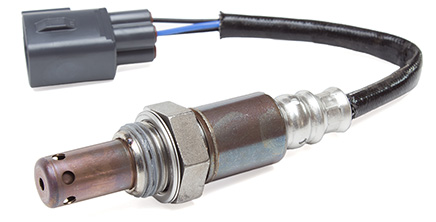
A fuel mixture that is too rich, i.e. when too much fuel is injected into the combustion chambers and there isn’t enough air, can damage the catalytic converter in GMC Sierra 2500 HD. This commonly happens due to a bad upstream oxygen sensor, but can also happen due to a bad MAF sensor or worn spark plugs. Any unburnt fuel in the engine that goes into the exhaust system will ignite in the catalytic converter. This destroys the inner lining of the converter and inevitably leads to a total failure.
How to check for a bad catalytic converter in GMC Sierra 2500 HD?
Reading out the fault codes using a diagnostic device is relatively reliable. If you see any fault code from P0420 to P0424 or from P0430 to P0434 in the OBD2 scanner, it indicates a problem with the catalytic converter. However, this is not always the case, as a bad oxygen sensor can also trigger catalytic converter codes. Therefore it is necessary to investigate the issue thoroughly before you consider replacing the very expensive catalytic converter in your Sierra HD.
Recommended video
Temperature test
Measuring the temperature of the catalytic converter in your Sierra HD can also help you with determining possible inner restrictions causing excessive back pressure. An infrared thermometer can be used for this test.
- Start the engine of your GMC Sierra 2500 HD and wait until it is at the right operational temperature level.
- Lift the vehicle, allowing easy access to the catalytic converter.
- Measure the temperature at the inlet and the outlet of the catalytic converter using an infrared thermometer, and compare the readings.
- If the temperature difference is higher than 10 degrees Celsius or 50 degrees Fahrenheit, then most likely the catalytic converter is clogged.
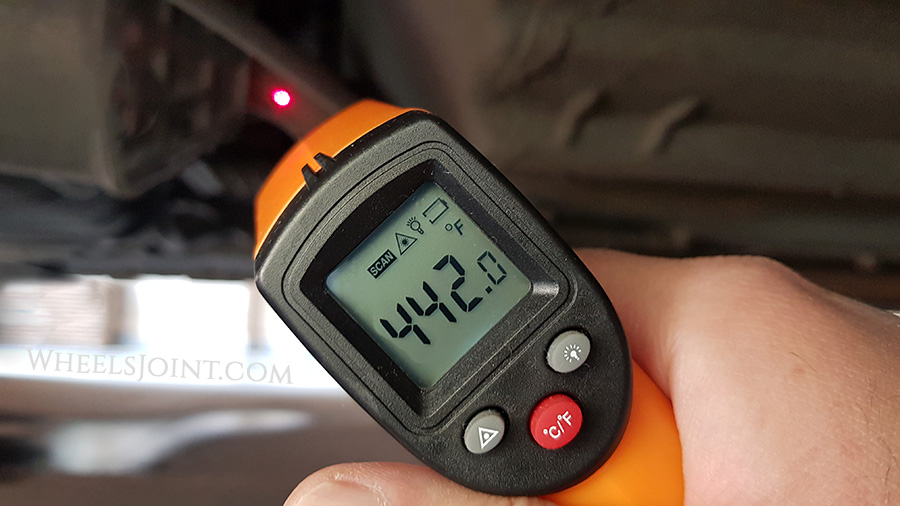
Exhaust back pressure test
There is a more accurate way to check if the catalytic converter is clogged in your GMC Sierra 2500 HD. For this test, all you need is a pressure gauge with its hose fitting.
- Unbolt the oxygen sensor near the inlet of the catalytic converter in your Sierra HD.
- Connect the hose of the gauge to where you removed the oxygen sensor.
- Start the engine and wait until it gets into operational temperature.
- If you notice higher than 3 psi (0.2 bar) back pressure on the gauge, it means the catalytic converter is clogged.
Use OBD2 scanner for diagnosis
Since GMC Sierra 2500 HD is equipped with on-board diagnostics (OBD), a fault diagnosis can provide initial indications of where the malfunction is located.
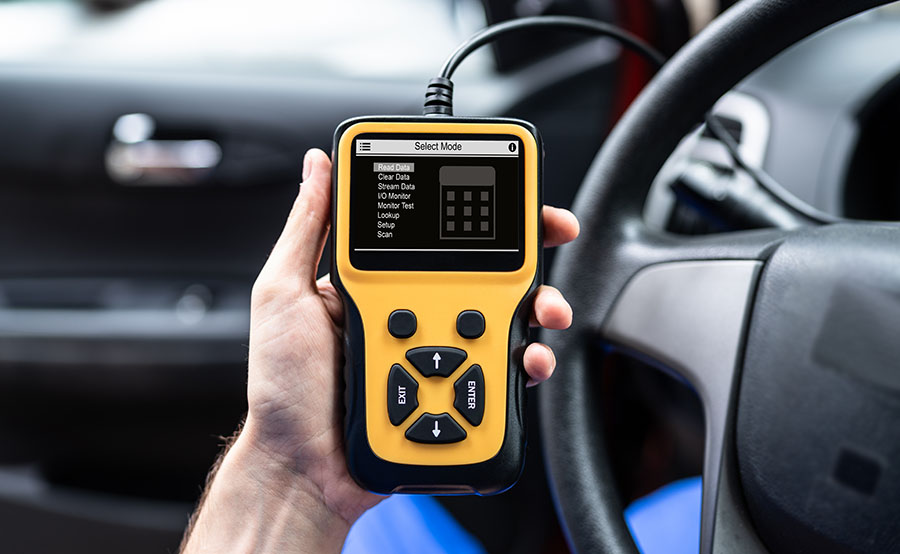
To begin troubleshooting, you must first connect the diagnostic tool to your Sierra HD. The OBDII connector is usually located under the dashboard. With the tool connected, turn on the ignition. Most diagnostic devices then ask for some information about the vehicle. It is important that you enter this 100% correctly, otherwise the result of the search may be inaccurate.
In addition to the vehicle make, model, and engine type, you usually also have to type in the Vehicle Identification Number (VIN). Since some OBD codes are manufacturer-specific, the scanner will be able to give you more accurate information if you enter more details about your Sierra HD.
Diagnostic error codes for Catalytic Converter
Following are all the error codes that indicate a problem with a catalytic converter.
- P0420 = Catalyst System Efficiency Below Threshold (Bank 1)
- P0421 = Warm Up Catalyst Efficiency Below Threshold (Bank 1)
- P0422 = Main Catalyst Efficiency Below Threshold (Bank 1)
- P0423 = Heated Catalyst Efficiency Below Threshold (Bank 1)
- P0424 = Heated Catalyst Temperature Below Threshold (Bank 1)
- P0430 = Catalyst System Efficiency Below Threshold (Bank 2)
- P0431 = Warm Up Catalyst Efficiency Below Threshold (Bank 2)
- P0432 = Main Catalyst Efficiency Below Threshold (Bank 2)
- P0433 = Heated Catalyst Efficiency Below Threshold (Bank 2)
- P0434 = Heated Catalyst Temperature Below Threshold (Bank 2)
Conclusion
If your GMC Sierra 2500 HD has racked up over 100,000 miles and you see noticeable loss of performance with high fuel consumption, a defective catalytic converter should definitely be considered. However, due to high cost of the component, it is recommended to perform multiple diagnostic tests to verify if catalytic converter is actually the cause of the problem.
In any case, it is advisable for laypersons to visit a workshop. A professional mechanic can swiftly diagnose the problem for you.






